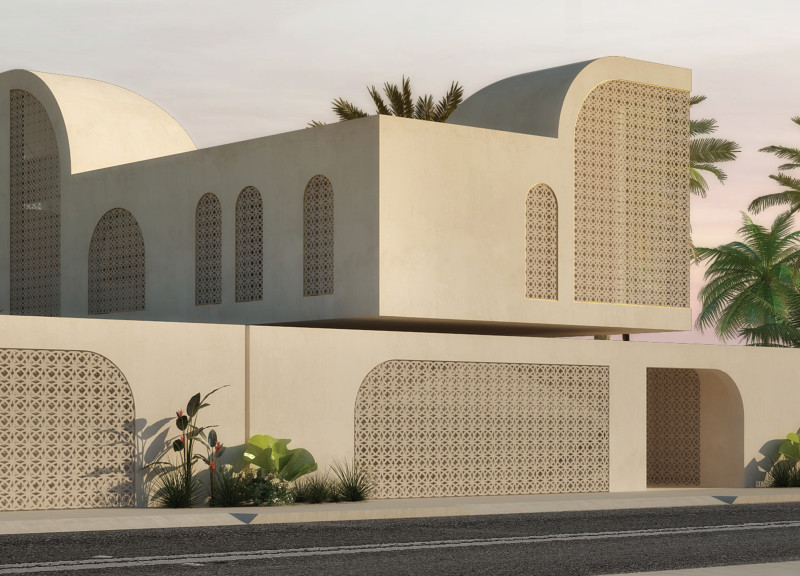5 key facts about this project
At the core of this project is a clear commitment to sustainability and a holistic approach to design. The building incorporates a range of eco-friendly materials, ensuring minimal environmental impact and enhancing its longevity. Features such as high-performance glazing and insulated wall systems reflect contemporary attention to energy efficiency while contributing to user comfort. The structure's facade is elegantly composed, using a combination of local stone and light-colored concrete that not only provides visual interest but also relates the building to its geographic context.
Key design elements include a welcoming entrance that promotes accessibility and encourages interaction. The ground floor is characterized by large, transparent glass panels that blur the boundaries between the interior and exterior, inviting passersby to engage with the space. This openness embodies the project's ethos of community connectivity and transparency. Inside, the layout emphasizes versatility, with adaptable spaces designed to accommodate various activities, from public gatherings to private functions. The interior design is marked by a minimalist aesthetic, featuring clean lines and natural materials that contribute to a calming atmosphere.
Unique design approaches are evident in both the structural and stylistic elements of the project. The integration of green roofs and rainwater collection systems exemplifies a forward-thinking strategy aimed at enhancing the building's sustainability while offering visual amenities. Terraces on upper levels extend the usable space outside, providing occupants with access to nature and views of the surrounding cityscape. These terraces serve multiple purposes, helping to mitigate urban heat while offering relaxation spots for users.
In terms of architectural details, the attention to craftsmanship is notable. Custom features such as wooden lattice screens and strategically placed louvers help manage solar gain while adding texture to the building’s exterior. Each element is carefully considered, contributing to the overarching narrative of the design, which prioritizes comfort, functionality, and aesthetic coherence. The seamless integration of technology for smart building management systems further aligns with modern expectations of architectural advancements.
This project also demonstrates a keen understanding of the social dynamics at play in its environment. By incorporating communal spaces such as gathering areas, parks, and pathways, the design encourages social interaction and fosters a sense of belonging among users. The thoughtful arrangement of these spaces promotes diversity in usage, ensuring that the building remains active throughout different times of the day.
As you explore this architectural endeavor further, consider examining the architectural plans and sections to gain insights into the underlying structural decisions and spatial relationships. The detailed architectural designs reveal the careful balancing act between aesthetics and practical requirements. Through this analysis, it becomes clear how innovative architectural ideas can shape our environments, enhancing user experience and fostering a sense of community. For an in-depth understanding and appreciation of this unique project, I encourage you to review the detailed presentations that showcase the thought processes and design evolutions behind this architectural achievement.


























